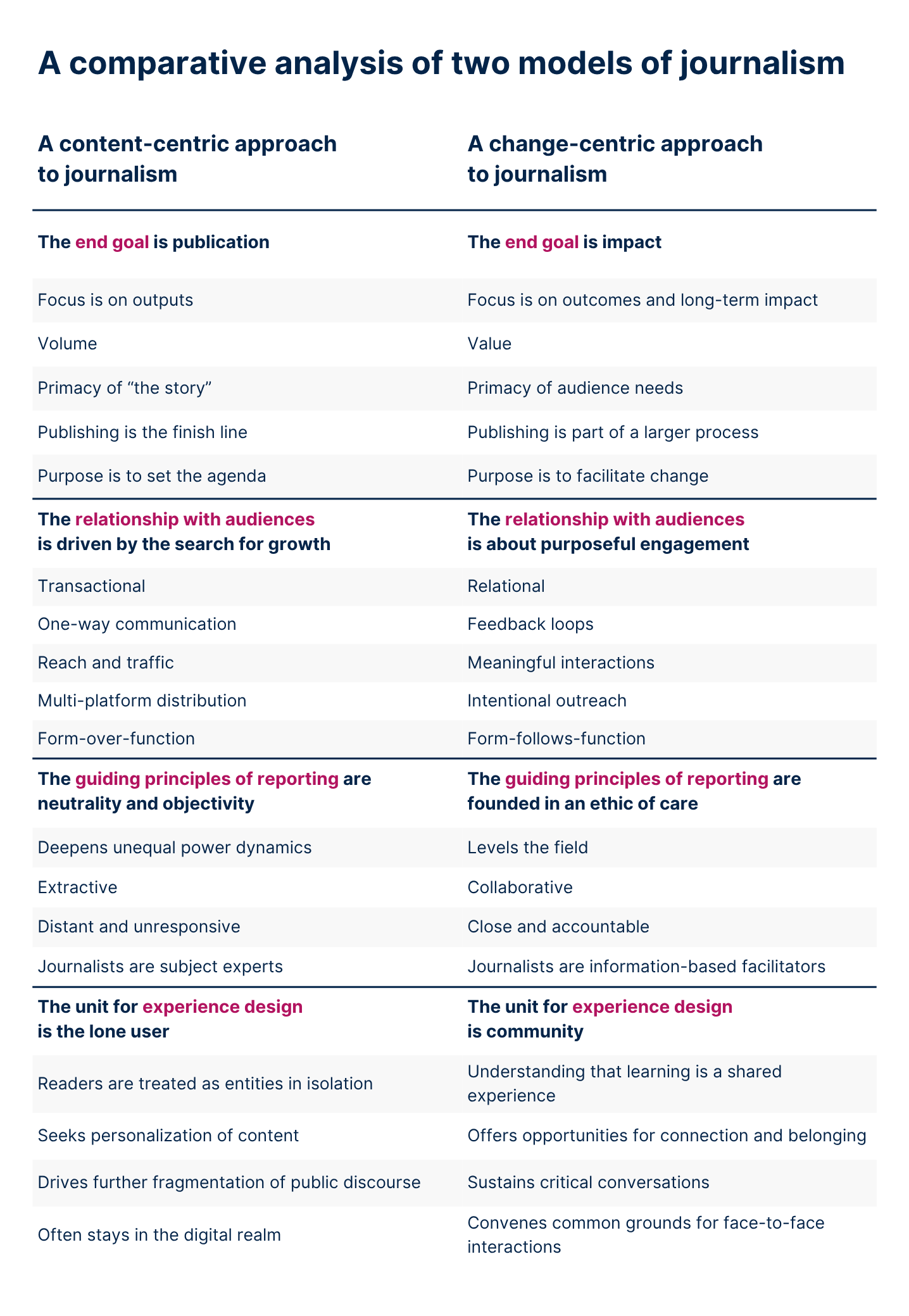The elements of Change-Centric Journalism
The simplest way to explain what Change-Centric Journalism proposes is to compare it to an approach that most of us are already deeply familiar with: the content-centric model.

This comparative analysis examines both models of journalism from four perspectives: the end goal of newsroom work; the relationship with audiences; the guiding values of reporting; and the unit of experience design.
Together, these dimensions shape not just how journalism is practised, but what journalism is for. The analysis draws out a mixture of principles and practices. Some are complementary; others are in tension. None are fixed. These are not intended as rigid binaries, but as reference points: starting places for reflection, debate, and redesign. Importantly, these characteristics are not immutable truths, but snapshots within a media ecosystem undergoing rapid change.
This framework offers a practical tool to reframe journalism’s value in a changing media ecosystem. It brings together lessons from academia, media development, and frontline newsrooms — particularly in the Global South — to support experimentation and recalibration.
Editors and media leaders, especially in small to mid-sized digital outlets, who are seeking clarity of mission, better use of limited resources, and tools to inspire teams facing burnout or stagnation.
Subscription, membership, or public-service models, where the case for continued support must go beyond reach and towards demonstrable social value.
Donors, funders, and media development practitioners looking to assess, support, or invest in journalism with a clear changemaking orientation.
Ultimately, the framework is a compass: not a checklist, but a guide to purpose, priorities and partnership in a complex, evolving media landscape.